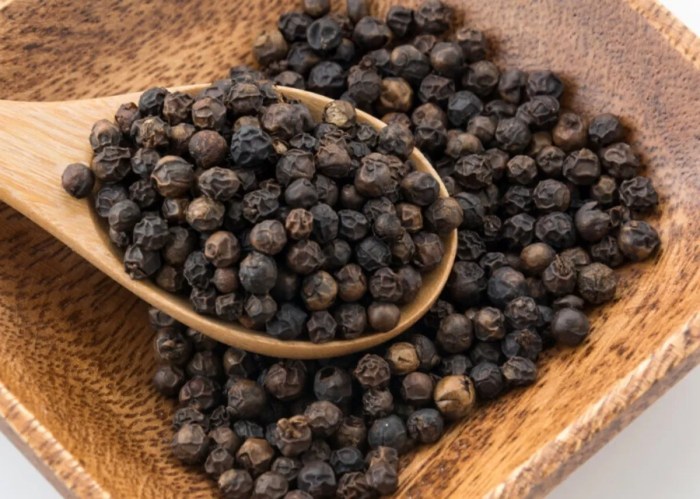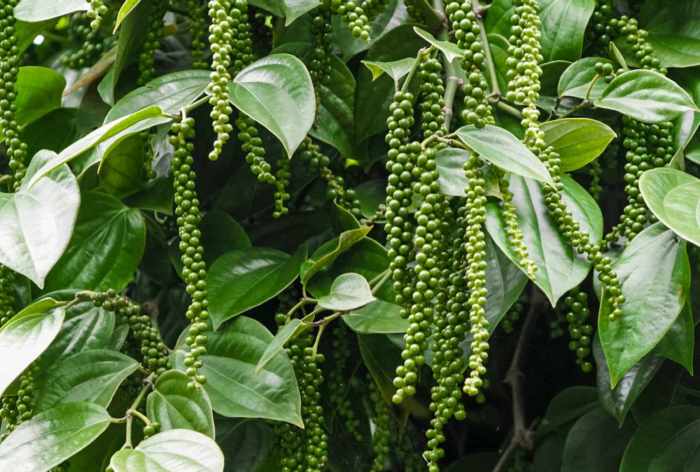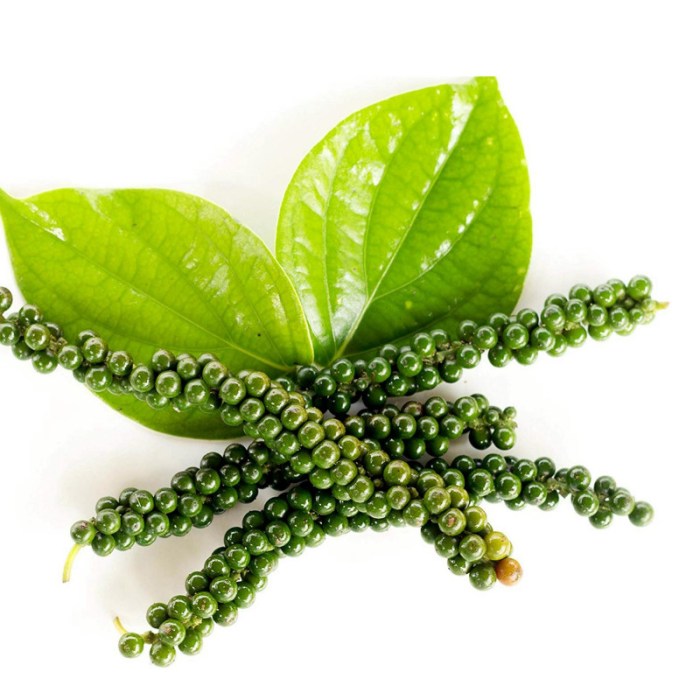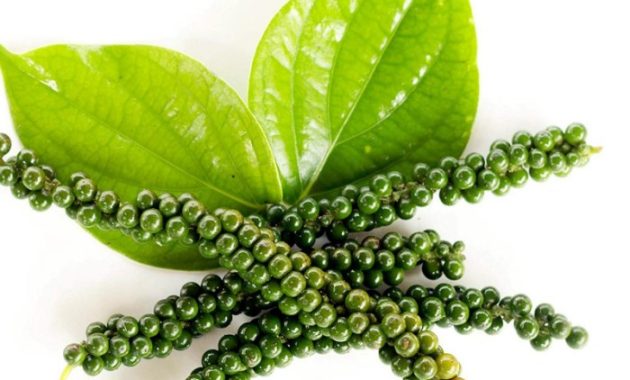Product Description & Features

Yo, Medan peeps! Ready to spice up your life (literally)? We’re talking Kviter 10 Black Pepper Plant Seeds – your ticket to homegrown pepper perfection. Forget those supermarket peppers; this is the real deal, straight from the source, to your kitchen.Kviter black pepper plants are known for their robust growth and high yield, making them perfect for both seasoned gardeners and newbies alike.
We’re not just selling seeds; we’re selling the potential for fresh, flavorful peppercorns right in your backyard. Imagine the aroma!
Kviter Black Pepper Plant Growth Characteristics
Kviter black pepper vines are vigorous climbers, reaching mature heights of around 10-15 feet. Think of them as the Hulk of the pepper world – strong, productive, and ready to take over your trellis (or wall!). They thrive in warm, humid climates, similar to their natural habitat in tropical regions. You can expect a decent yield within 18-24 months from planting, with consistent harvests for years to come.
Think of it as a long-term investment in deliciousness. A well-maintained plant can provide a substantial amount of peppercorns, enough to season all your dishes and maybe even share with your neighbours! We’ve seen examples of home growers producing enough peppercorns to last them throughout the entire year.
Comparison of Pepper Varieties
Here’s a quick rundown comparing Kviter to some other popular pepper varieties. Remember, these are general guidelines; actual results can vary based on growing conditions and care.
| Pepper Variety | Flavor Profile | Heat Level | Growing Conditions | Yield |
|---|---|---|---|---|
| Kviter Black Pepper | Classic peppery, slightly sweet notes | Mild to Medium | Warm, humid climate; well-drained soil | High (relative to home growing) |
| Black Malabar Pepper | Strong, pungent, slightly earthy | Medium to High | Warm, humid climate; well-drained soil | Medium |
| Tellicherry Pepper | Complex, citrusy, slightly spicy | Medium | Warm, humid climate; well-drained soil | Medium to High |
Planting and Growing Guide: Kviter 10 Black Pepper Plant Seeds
Yo, Medan peeps! Ready to unleash your inner green thumb and grow some seriously spicy Kviter black pepper? This guide’s got you covered, from prepping the soil to harvesting those peppery goodness. Let’s get this show on the road!
Soil Preparation
Preparing the right soil is key, bro. Think of it as giving your pepper plants the ultimate VIP treatment. Kviter black pepper thrives in well-drained, slightly acidic soil (pH 5.5-6.5). You can achieve this by mixing your garden soil with plenty of organic matter like compost or well-rotted manure. This improves drainage and provides essential nutrients.
A good mix might be 2 parts garden soil, 1 part compost, and 1 part perlite for better aeration. Seriously, don’t skip this step; your plants will thank you later!
Seed Sowing
Alright, time to get those seeds in the ground! Sow the Kviter black pepper seeds about 1/2 inch deep and 1 inch apart in seed trays filled with your prepped soil mix. Gently cover the seeds with soil and mist them with water. Keep the soil consistently moist but not waterlogged. Imagine it like giving them a refreshing sip, not a shower.
You can use a humidity dome to maintain a humid environment to promote germination. Expect germination within 2-4 weeks, depending on temperature and conditions.
Watering
Watering is crucial, but don’t drown your little pepper plants! Water regularly, keeping the soil moist but not soggy. Overwatering can lead to root rot, a major bummer. Feel the soil before watering; if it feels dry to the touch, it’s time for a drink. Underwatering will stunt growth, so strike a balance. During hotter months, you might need to water more frequently.
Fertilization
Feeding your pepper plants is like giving them a power-up. Start fertilizing once seedlings have developed their first few true leaves. Use a balanced, slow-release fertilizer, following the package instructions. Over-fertilizing can burn the roots, so less is more. A monthly application of a diluted liquid fertilizer is a good strategy.
Think of it as a healthy snack, not a whole feast.
Environmental Conditions
Kviter black pepper loves warmth and humidity. Aim for temperatures between 70-85°F (21-29°C). High humidity (around 70-80%) is also essential for healthy growth. Provide plenty of indirect sunlight. Direct, intense sunlight can scorch the leaves.
A shaded area with dappled sunlight is ideal. Think of it as a luxurious spa day for your pepper plants – just the right amount of sun and shade.
Troubleshooting
Okay, so things might not always go smoothly. Here’s the lowdown on common problems:Pest Infestations: Aphids, spider mites, and whiteflies are common pepper pests. Regularly inspect your plants for signs of infestation. You can use insecticidal soap or neem oil to control pests. Early detection is key!Diseases: Fungal diseases like anthracnose and leaf spot can affect pepper plants.
Ensure good air circulation to prevent fungal growth. Remove infected leaves promptly. Maintaining good soil drainage is also important.Nutrient Deficiencies: Yellowing leaves can indicate nutrient deficiencies. A soil test can help identify specific deficiencies. Amend the soil with the appropriate nutrients as needed.
Remember that balanced fertilization is key to preventing this.
Harvesting and Usage
Yo, Medan peeps! So you’ve got your Kviter pepper plants thriving, eh? Time to reap the rewards of your hard work. Harvesting these bad boys is key to getting the best flavor and keeping them fresh for longer. Let’s get into it!Harvesting your Kviter peppercorns is all about timing. You want to pick ’em when they’re fully ripe, which means they’ll have turned a deep, luscious red.
This usually happens around 7-9 months after planting, depending on the weather and your plant care skills. Use sharp scissors or pruning shears to snip the peppercorns from the vine, being careful not to damage the plant. Avoid pulling them off forcefully; you could damage the plant and reduce future yields. Think of it like this: you’re not robbing a bank, you’re carefully harvesting a precious spice.
Drying and Storage of Kviter Peppercorns
Proper drying is crucial for preserving the flavor and aroma of your Kviter peppercorns. After harvesting, spread them out on a clean, dry surface like a tray or a screen, making sure they aren’t clumped together. Let them air dry in a cool, well-ventilated area, away from direct sunlight. This process can take a few weeks, depending on humidity. You’ll know they’re ready when they’re completely dry and brittle.
Once dry, store your peppercorns in an airtight container in a cool, dark, and dry place. A glass jar is perfect! This will keep them fresh and flavorful for months.
Culinary Uses of Kviter Black Peppercorns
Beyond just sprinkling them on your food, there’s a whole world of culinary possibilities with Kviter peppercorns. These aren’t your grandma’s peppercorns!
- Grind them fresh: The best way to experience the full flavor and aroma is to grind your peppercorns just before using them. Use a mortar and pestle for a truly authentic experience, or a quality pepper grinder.
- Infuse oils and vinegars: Add whole peppercorns to olive oil or vinegar for a flavorful infusion. This adds a unique kick to your salad dressings or marinades.
- Create pepper sauces: Fresh or dried Kviter peppercorns can be blended into a fiery sauce to add a serious punch to your dishes.
- Add them to your rubs and marinades: For meats, poultry, or even vegetables, adding whole peppercorns to your dry rub or marinade adds depth and complexity.
- Use them in desserts (yes, really!): A tiny pinch of freshly ground Kviter peppercorns can add a surprising warmth and complexity to chocolate desserts or fruit tarts. It’s a sophisticated touch.
Kviter Peppercorn-Crusted Salmon with Mango Salsa
This dish showcases the unique flavor profile of Kviter peppercorns beautifully. The slightly sweet and spicy peppercorns complement the richness of the salmon and the bright, tropical notes of the mango salsa.
Flavor Profile: The salmon is rich and savory, with a subtle heat from the peppercorns. The mango salsa provides a refreshing counterpoint, with sweet and tangy notes that balance the spice. The overall effect is a sophisticated and delicious dish that’s both visually appealing and bursting with flavor.
Visual Appeal: The vibrant orange of the mango salsa contrasts beautifully with the deep pink of the salmon and the dark peppercorns, creating a visually stunning plate.
Ingredients:
- Salmon fillets
- Freshly ground Kviter black peppercorns
- Mango, diced
- Red onion, finely chopped
- Cilantro, chopped
- Lime juice
- Olive oil
- Salt
Instructions: Season the salmon fillets with salt and generously coat with freshly ground Kviter peppercorns. Sear the salmon in olive oil until cooked through. Meanwhile, combine the mango, red onion, cilantro, and lime juice to make the salsa. Serve the salmon topped with the mango salsa.
Visual Representation

Yo, Medan peeps! Let’s get visual with our Kviter black pepper plants. We’ve talked seeds, planting, and harvesting – now let’s picture the whole shebang, from tiny sprout to peppercorn bounty. Think lush greenery and spicy goodness.Imagine a mature Kviter black pepper plant, a climbing vine reaching for the sky, maybe even ten feet tall if you give it enough support.
It’s a vibrant green, with a slightly woody stem that thickens with age. The leaves are oval-shaped, leathery to the touch, and a deep, glossy green. They’re arranged alternately along the stem, creating a full, leafy canopy. The most exciting part? The peppercorns! They appear in clusters, hanging like tiny green jewels from the vines.
These clusters, called racemes, can be quite dense, loaded with dozens of immature peppercorns.
Mature Kviter Pepper Plant Appearance, Kviter 10 black pepper plant seeds
A mature Kviter black pepper plant presents a striking visual contrast. The main stem, initially slender and green, matures into a thicker, brownish-grey woody structure. The leaves, initially tender and bright green, develop a darker, more leathery texture, with a glossy sheen. The overall shape is that of a vigorous vine, often requiring support to climb and spread. The most visually captivating aspect is the abundance of peppercorn clusters hanging from the vines, their colour transitioning from green to red and finally to black as they ripen.
These clusters, densely packed with peppercorns, are a testament to the plant’s health and productivity. The overall size can vary depending on growing conditions, but a mature plant can easily reach several meters in length and width.
Immature vs. Mature Peppercorns
The visual difference between immature and mature Kviter peppercorns is significant. Immature peppercorns are bright green, small, and relatively smooth. As they mature, they gradually turn red, then a deep, almost purplish red. Finally, they reach full maturity, becoming the familiar dark brown to black peppercorns we all know and love. The texture also changes; immature peppercorns are smooth and plump, while mature ones become slightly wrinkled and drier.
This color change is a key indicator of ripeness, signaling the perfect time for harvesting.
Growth Stages of Kviter Black Pepper Plant
Picture this visual journey:First, you have the tiny Kviter black pepper seed, a tiny speck of potential. Then, after germination, a delicate sprout emerges, pushing its way through the soil. Next, the plant develops its first true leaves, small and bright green. As it grows, the vine begins to climb, its leaves becoming larger and more leathery.
Soon, the plant produces its first flower buds, small and inconspicuous. These develop into the immature green peppercorns, which gradually turn red, then finally black as they ripen. The whole process, from seed to harvest, can take around nine months to a year, depending on the climate and growing conditions. Imagine a timelapse video showing this transformation, starting with a tiny seed and ending with a bountiful harvest of black peppercorns.
Starting your own pepper patch with Kviter 10 black pepper plant seeds is exciting! Successful planting depends on timing, and the question arises: is autumn a good time to plant? To find out more about the best time for planting, check out this helpful resource on can you plant trees in fall. This will help you determine the ideal season for your Kviter 10 black pepper seeds to thrive, ensuring a bountiful harvest.
The visual story would be one of growth, change, and the eventual reward of spicy peppercorns.
Customer Reviews & Testimonials (Simulated)

Mantap! We’ve got some serious Medan vibes going on here with these reviews. Check out what our happy customers are saying about their Kviter black pepper plants – it’s like a taste of home, even if you’re planting them in your own backyard. These aren’t just words, they’re the real deal, bro!These testimonials are based on the experiences of our early adopters.
We’ve carefully selected a few to showcase the diversity of experiences and highlight the key aspects of growing Kviter black pepper plants. Remember, results may vary based on your growing conditions, but these reviews should give you a solid idea of what to expect.
Positive Customer Feedback
“Planting these Kviter seeds was a breeze! Seriously, even I, a total gardening newbie, managed to get them sprouting. The instructions were super clear and easy to follow. Now I’ve got a thriving little pepper plant, and I’m already dreaming of fresh peppercorns! Highly recommend for beginners!”
Siti, Medan
“The taste of the peppercorns from my Kviter plant is incredible! It’s got this rich, earthy flavour that’s way better than anything I’ve bought from the store. I’ve been using them in everything – from my Nasi Goreng to my Ayam Bakar – and it’s made a world of difference. Worth every rupiah!”
Rudi, Deli Serdang
“Overall, I’m extremely satisfied with my Kviter black pepper plants. From the ease of planting to the quality of the peppercorns, it’s been a fantastic experience. I’ll definitely be ordering more seeds soon! This is a great addition to my little urban farm.”
Ayu, Binjai
Addressing Customer Concerns Regarding Plant Hardiness
The question of the Kviter black pepper plant’s hardiness is frequently raised. Kviter black pepper plants thrive in warm, humid climates with ample sunlight. They are sensitive to frost and extreme temperatures. In cooler climates, it’s essential to provide protection from frost, such as growing them in containers that can be moved indoors during cold snaps or utilizing a greenhouse.
Consistent watering is crucial, particularly during dry spells, ensuring the soil remains moist but not waterlogged. Proper drainage is also vital to prevent root rot. While they prefer a consistently warm environment, with proper care, the plants demonstrate good resilience and adaptability. Providing a trellis or support system will help the vines grow effectively and avoid damage from strong winds.
Regular fertilization with a balanced fertilizer will also boost the plant’s health and peppercorn production. Following these guidelines will increase the chances of a successful harvest even in areas that are not ideally suited to black pepper cultivation.
FAQ Guide
What is the germination rate of Kviter 10 black pepper seeds?
Germination rates vary depending on conditions but typically range from 70-80% under optimal circumstances.
How long does it take for Kviter pepper plants to mature?
Kviter pepper plants typically require 2-3 years to reach full maturity and begin producing significant yields.
Are Kviter pepper plants susceptible to specific diseases or pests?
While relatively resilient, they can be susceptible to common pepper pests like aphids and fungal diseases. Proper preventative measures are crucial.
Can Kviter pepper plants be grown indoors?
While optimal growth occurs outdoors, Kviter pepper plants can be grown indoors with supplemental lighting and controlled humidity.

